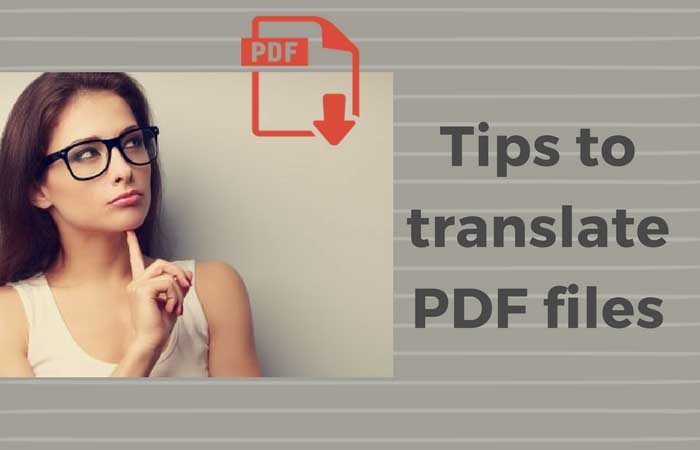If you are a translator, you may already have had a client ask you to translate a PDF document.
But what exactly is a PDF file? PDF stands for Portable Document Format. It is easy to open on various devices and is a standard file used for sharing business documents. Translating with a PDF editor means you’ll likely have to do some reformatting since the translation will have a different word count (texts written in Spanish, for example, are typically 20-30 percent longer than texts written in English). There may also be graphics, images and tables with text inside them that will have to be reformatted to accommodate the new word count.
Do you need to deliver the translation with a format identical to the PDF file?
There is a chance that the client doesn’t need a file with an identical format. They might just want the translation sent to them in a Word document and have someone internal do the PDF formatting with the translated text. Do not assume that they want you to take care of the formatting just because the document they sent you is a PDF file. Ask them first and find out exactly what they need.
If the client has decided they want you to do the formatting, here is what you need to do:
Establish how the PDF was created
Is it a simple file created from a Word document or was it created with a graphic design software such as InDesign? Or is it a scanned document? If it was created with a Word document, the conversion will usually be pretty simple. To find out which application was used to create the PDF: Click (in Adobe Acrobat) File> Properties> Description. Under Application, the program used to create it will be listed (e.g. MS Word, InDesign).
Choose the best PDF translating method
Direct translation– If the PDF file is not a scanned document, it is possible to translate directly in a PDF editor (such as Adobe Acrobat) by overwriting the text. As mentioned above, the word count in the translated version will be different, which means you will need to work out some formatting issues. With a direct translation, this can be a challenge as formatting options are limited with PDF editors.
Retyping– This is basically the only option for scanned documents that are converted badly with an OCR software since you cannot edit the text using a PDF editor. For other types of docs where the text can be edited, retyping would be the most time-consuming way to translate a PDF file, potentially adding hours to your translation time.
OCR software– OCR (Optical Character Recognition) programs are not free but they are ideal for challenging formatting issues. They allow you to convert PDFs to editable documents. It should be noted that, in most cases, you will need to fix the format after converting and exporting PDFs to Word. You should learn the basics of the OCR software you use. There is a way to choose how blocks will be read by the OCR software. For example, you can choose the program to read a block as an image, table or text.
Computer-Assisted Tools– Programs such as SDL Trados allow you to extract the text from a PDF to be translated in their interface but will not help when it comes to formatting issues.
PDF readers and editor– PDF readers and editors programs allow you to copy the text to the clipboard or copy and paste text manually. The paid versions let you convert and export files. This option is not ideal for complex formatting.
How to charge for a PDF translation
If you are presented with a PDF file with a complex format, ask your client if they can provide you with the source file. If they cannot and want you to deliver a translation with an identical format, in order to calculate your price for the client, you should consider how long it will take you to reformat the file with the translated text and if you will need to use a vendor (such as a graphic designer) in order to do this successfully.
A final tip
For those who work with PDFs frequently, a PDF editor such as Adobe Acrobat Professional is recommended, however, there are also cheaper options so shop around before you purchase one.
Do you need to translate a PDF? Contact us for a quote!








